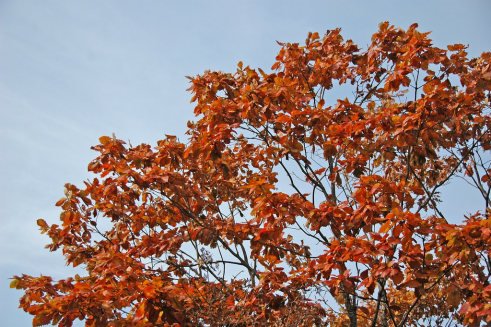What does Japanese Oak do to whisky?

I am always being asked whether Japanese whisky has any defining characteristics that set it apart from its very close relative, Scotch whisky. I am usually sceptical of efforts to draw stark distinctions because the Japanese distillers are so loyal to the Scotch whisky making tradition that they have been imbibing since 1923. There have been some recent developments that suggest greater freedom in the future and there are some drinking customs, such as the Japanese habit of eating while drinking and mixing whisky in mizuwaris and oyuwaris, that undoubtedly influence some sectors of the Japanese whisky market. Overall, though, Japanese whisky is firmly within the Scottish tradition and it is not possible to reliably distinguish Scottish and Japanese drams by taste.
However, one major difference that is already well established is the widespread use of Mizunara (Japanese Oak) barrels for maturing whisky by many of the major Japanese distillers. This is by no means a universal practice but it is an additional option not presently available to the Scottish.
Do Mizunara barrels give a distintive flavour to their whisky? Most people agree they do. This special taste/aroma has been variously described as evoking "sandalwood", a type of oriental incence called "kara" etc.. However, more recently, scientific research has focused on a distinctive coconut aroma associated with Mizunara barrels. A paper delivered by Yushi Noguchi at the Worldwide Distilled Spirits Conference 2008 in September tried to pin down this characteristic and makes fascinating reading.
The researchers, supported by Suntory, The International Centre for Brewing and Distilling and the Scotch Whisky Research Institute, asked a panel of testers to score how much coconut smell they detected in two types of whisky: one matured in Mizunara and the other matured in White Oak barrels.

As you can see, the Mizunara matured whisky appears to have had a much more definite coconut aroma.
But why? Whisky lactone (3-methyl-4-octanolide) has long been known to have definite coconut aromas. It is found in all types of oak. The researchers then tested three types of whisky for lactone content.

The Mizunara matured whisky had slightly more lactones (parts per million) than the European and White Oak matured versions, but the surprising thing about the research was the preponderance of "trans-oak" lactones in the Mizunara whisky. This was surprising because "cis-oak" lactones are thought to have much stronger smell than "trans-oak" lactones. About 10 times stronger smell, in fact!
The researchers therefore went back to their panel of testers with one more experiment. They 1ppm cis-oak lactone in 20 per cent ethanol solution and compared it with a similarly prepared trans-oak lactone. They also did the same comparison in whisky rather than the ethanol solution. The conclusion was that, though the trans-oak lactones do have a weaker smell, their smell works better with the whisky's own aromas/tastes and this creates the impression of a stronger coconut presence.
The graphs and report are from Suntory Information Release No. 10235. The graphs are the property of the researchers and their supporting institutions. My translations into English are provided for readers' information and are not sanctioned by the researchers. The photograph of the mizunara tree was taken by autan and is subject to this Creative Commons license. The original tip-off about the Suntory report of the research came from Katotomo`s brilliant website .


Comments
Thanks for this very interesting information. I agree, it is difficult to tell a Japanese whisky from a Scottish one, but have heard and long wondered about the effects of Japanese oak. Since it is oak, why can't the Scots use it?
Davin